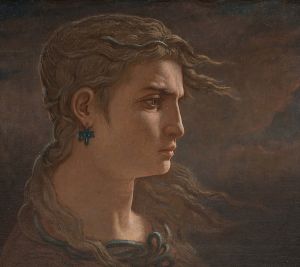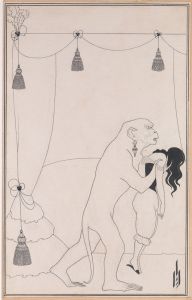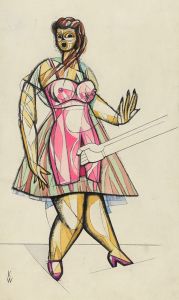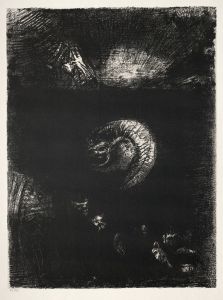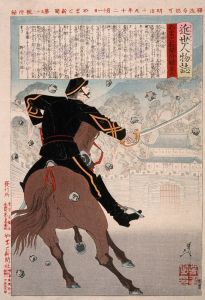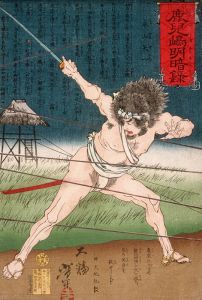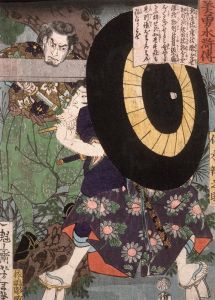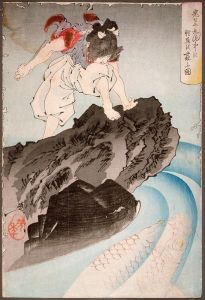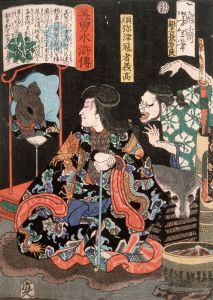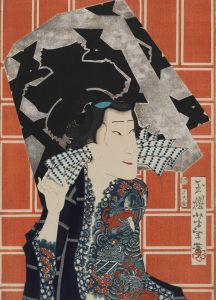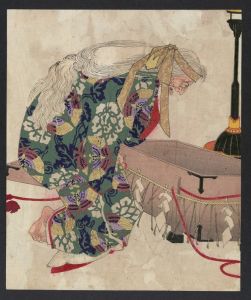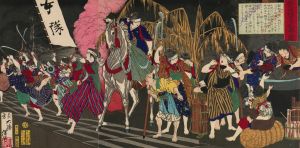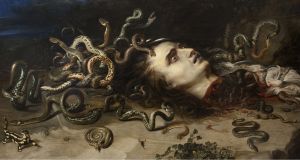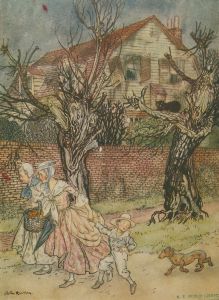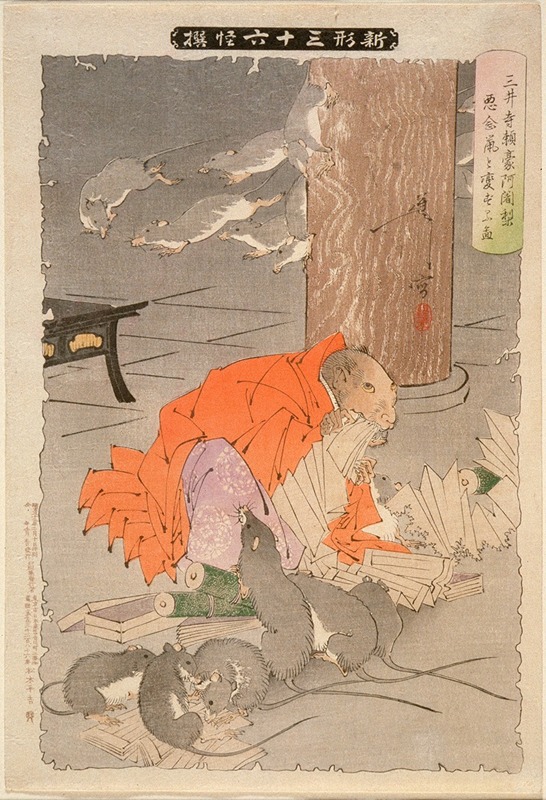
The Wicked Thoughts of the Priest Raigō of Miidera Transform Him into a Rat
A hand-painted replica of Tsukioka Yoshitoshi’s masterpiece The Wicked Thoughts of the Priest Raigō of Miidera Transform Him into a Rat, meticulously crafted by professional artists to capture the true essence of the original. Each piece is created with museum-quality canvas and rare mineral pigments, carefully painted by experienced artists with delicate brushstrokes and rich, layered colors to perfectly recreate the texture of the original artwork. Unlike machine-printed reproductions, this hand-painted version brings the painting to life, infused with the artist’s emotions and skill in every stroke. Whether for personal collection or home decoration, it instantly elevates the artistic atmosphere of any space.
Tsukioka Yoshitoshi (1839–1892) was a prominent Japanese ukiyo-e artist, known for his innovative and dramatic woodblock prints. One of his works, The Wicked Thoughts of the Priest Raigō of Miidera Transform Him into a Rat, is part of his series New Forms of Thirty-Six Ghosts (Shinkei Sanjūrokkaisen), which was published between 1889 and 1892. This series explores supernatural themes, drawing inspiration from Japanese folklore, historical events, and literary sources.
The print depicts the story of Raigō, a Buddhist priest from Miidera Temple, whose tale is rooted in Japanese legend. According to the story, Raigō was a learned and devout monk who became embroiled in a conflict with Emperor Shirakawa during the late Heian period (794–1185). The emperor sought Raigō's prayers to ensure the birth of a male heir. Raigō agreed, but only on the condition that the emperor would grant Miidera Temple significant rewards. After Raigō's prayers were successful and the emperor's son was born, the emperor reneged on his promise, offering only a meager reward. Feeling betrayed, Raigō became consumed by anger and resentment.
The legend states that Raigō's malevolent thoughts transformed him into a monstrous rat, which led an army of rats to attack the emperor's palace and destroy sacred texts. This tale serves as a cautionary story about the dangers of unchecked anger and the consequences of broken promises. It also reflects the tension between spiritual devotion and worldly desires.
Yoshitoshi's print captures the moment of Raigō's transformation, emphasizing the grotesque and supernatural elements of the story. The composition features a large, menacing rat with human-like features, symbolizing Raigō's corrupted spirit. The dark and eerie atmosphere of the print is characteristic of Yoshitoshi's later works, which often combined traditional ukiyo-e techniques with a more modern and psychological approach to storytelling.
This work is an example of Yoshitoshi's ability to blend folklore, history, and artistic innovation. It also reflects the broader cultural fascination with ghost stories and supernatural themes during the late Edo and early Meiji periods in Japan. Today, Yoshitoshi's prints, including The Wicked Thoughts of the Priest Raigō of Miidera Transform Him into a Rat, are celebrated for their technical mastery and their ability to convey complex narratives through visual art.





